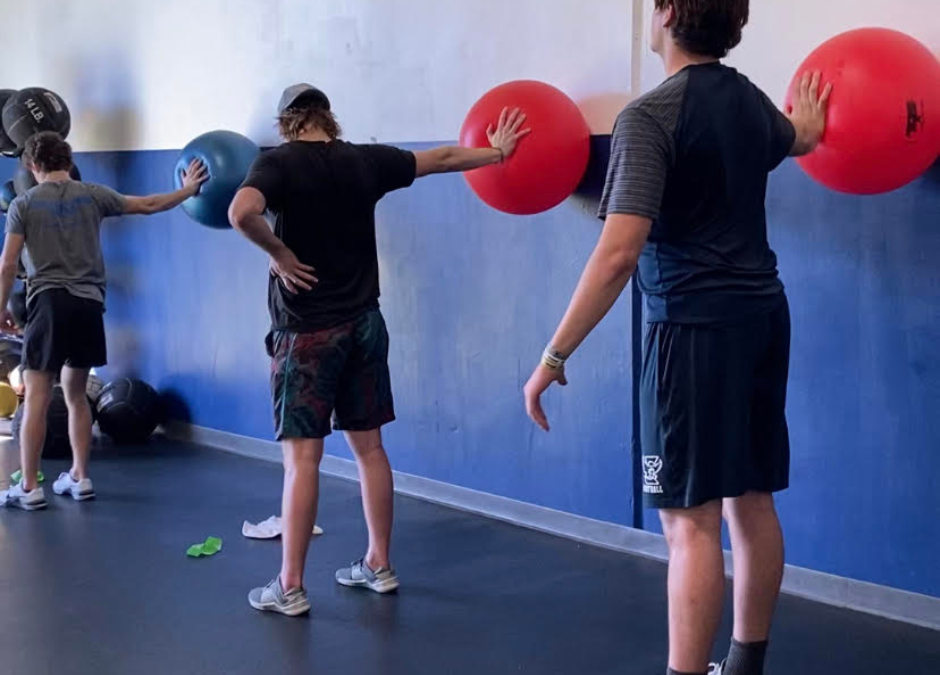As athletes, we often rush into practice or games, eager to showcase our skills and give it our all. However, one crucial step is frequently overlooked: the warm-up. A proper warm-up is essential for maximizing performance and reducing the risk of injury.
Why Warm Up?
– Increases Blood Flow and Muscle Temperature: A good warm-up gradually increases your heart rate, improving blood flow to your muscles. Warmer muscles are more elastic and efficient, enhancing your range of motion and overall performance.
– Enhances Performance: Warming up prepares your body for the demands of intense activity. It improves coordination, reaction time, and agility, helping you perform at your best.
– Reduces Injury Risk: A proper warm-up can significantly reduce the risk of injuries. By preparing your muscles and joints for the stress they will encounter, you can avoid strains, sprains, and other common injuries.
– Mental Preparation: Warming up isn’t just physical; it’s mental too. It gives you a chance to focus, set goals for your practice or game, and get into the right mindset.
What Should a Proper Warm-Up Include?
– Dynamic Stretching: Instead of static stretches, which can temporarily weaken muscles, dynamic stretching is the way to go. Focus on movements that mimic the activities you’ll be doing. For example: leg swings, arm circles, high knees, butt kicks, and skips.
– Mobility Exercises: Incorporate movements that promote joint mobility. This could include hip openers, ankle rolls, and shoulder rotations. Ensuring your joints are limber can enhance performance and protect against injuries.
– Sport-Specific Drills: Incorporate drills that are specific to your sport. This helps activate the muscles you’ll be using during play. For a soccer player, this could mean dribbling or passing drills; for a basketball player, some shooting or defensive slides.
– Gradual Intensity Increase: Start at a lower intensity and gradually increase. If you’re a runner, begin with a slow jog and gradually work up to your target pace. This allows your body to adjust and reduces shock to the system.
– Short, Intense Intervals: Finish your warm-up with a few short bursts of high-intensity activity, such as sprinting or quick changes of direction. This helps prepare your body for the intensity of competition.
Why Warm Up for Both Practice and Games?
– Consistency in Training: Just as you warm up for games to perform at your best, warming up for practice is equally important. Consistent warm-ups help establish good habits, ensuring that your body is always ready to train effectively, regardless of the setting.
– Skill Development: Practices are where you refine your skills, and a proper warm-up prepares your body to execute movements accurately. When your muscles are primed, you can focus on technique without the distraction of tightness or discomfort.
– Injury Prevention: Injuries can occur during practice just as easily as in games. A thorough warm-up helps mitigate this risk, allowing you to train safely and
effectively, ultimately leading to better performance on game day.
In the hustle and bustle of sports, it’s easy to skip the warm-up. However, investing time in a proper warm-up routine is critical for both performance and injury prevention. Remember, a few extra minutes of preparation can make all the difference in your game. So next time you’re gearing up, take the time to warm up properly—you’ll be glad you did!
Abby Edwards is a strength Coach at Compete Sports Performance and Rehab in Orange County, CA. Abby received her bachelors degree at Central Michigan University where she played women’s soccer.

